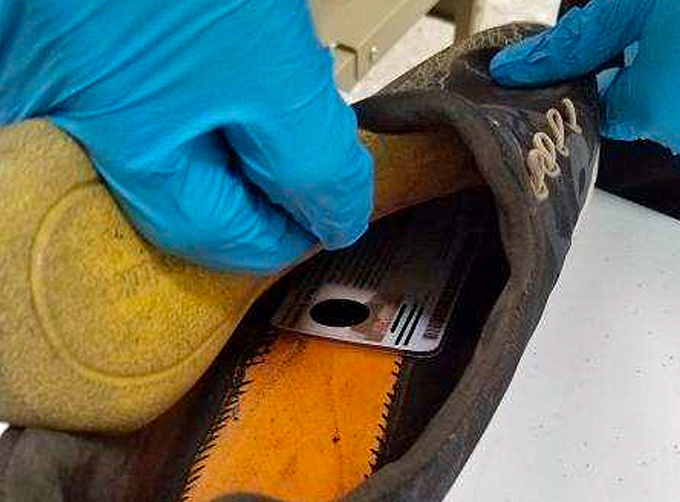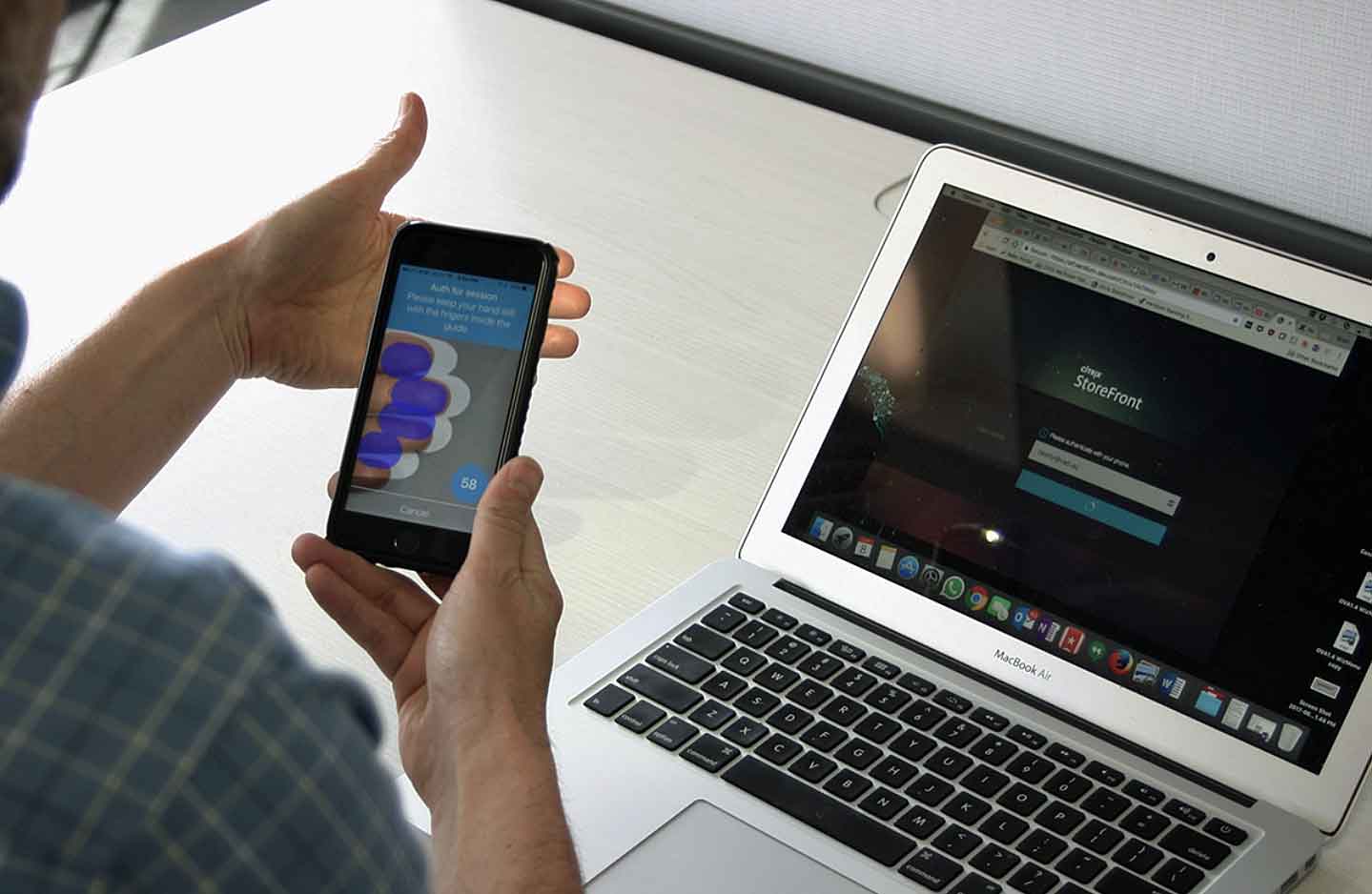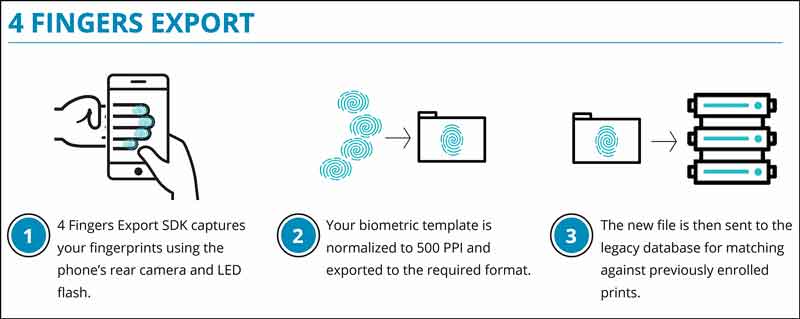
Guest OpEd by James Stickland, CEO of Veridium
Law enforcement professionals have always sought innovative ways to combat crime more efficiently and effectively. In recent years, cheaper, smaller, more portable and readily available technology has helped the profession evolve.
The dashboards of police vehicles today rival those of the futuristic Tesla, and officers can often be found using equipment like drones or body cameras while on duty.

A specific technology that’s risen to the top is biometrics.
Biometrics have been rapidly adopted in recent years in order to modernize security and turn the arduous task of identifying individuals into a faster and more accurate process.
The most commonly used biometrics are digital fingerprints, iris scans and facial recognition.
While the implementation of this technology in law enforcement is nothing new, its adoption continues to surge within the global law enforcement industry.
The Federal Bureau of Investigation (FBI) is a leading example of how law enforcement agencies are embracing biometrics.
The organization now has the largest biometric database in the world, according to an article in the International Business Times.
(Learn More. The FBI’s 2017 Biometric Identification Award, presented to an outstanding law enforcement officer or agency for efforts in solving major cases through the use of the Next Generation Identification, or NGI, system, has been awarded to the Texas Department of Public Safety, Austin, Texas for identifying the subject of a child pornography investigation using the picture of a fingerprint seen within a digital pornographic image. Courtesy of the Federal Bureau of Investigation (FBI) and YouTube. Posted on Feb 2, 2018.)
In fact, the FBI’s Next Generation Identification (NGI) has seen significant improvements in accuracy rates on queries since its revamp in 2010, the result of their new high-tech tools and algorithms that more effectively search for criminals.
As of December 2017, the NGI included more than 74 million biometric records in the criminal repository and over 57.5 million records in the civil repository.
So, what’s causing the increased popularity of biometrics?
Faisal Ghaus, vice president of TechNavio Research summarized the growing need for biometrics within the industry when he said, “The rate of terrorist attacks and data thefts is increasing, increasing the need for high-level security.”
“The rapidly growing law enforcement and homeland security sectors face a growing number of security threats. Factors such as these have increased the demand for biometrics in North America.”
Catching the Criminals
We see biometrics used to ensure citizen safety. The Department of Homeland Security (DHS) is using biometric recognition at US borders to more accurately track foreign visitors.
For example, we see DHS programs engage in biometric and personally identifiable information (PII) data mining such as a-ID, an automatic identification tag that stores a unique serial number that can be linked to a traveler profile, including biometric and biographic data.
(Learn More. Balancing speed and security at checkpoints, like airports, is essential to ensuring safe, reliable travel. Many of these checkpoints are increasingly using biometric technology to improve speed and reliability. While recent improvements in biometrics have lowered failure to match rates, many systems fail to quickly acquire biometric information in the first place. Courtesy of the DHS Science and Technology Directorate and YouTube. Posted on Jul 27, 2018.)
Most recently, biometrics are becoming more widespread as the identification method for crime investigations or as a way to track surveillance to locate certain criminal entities.
Law enforcement agencies everywhere face complex criminal threats transcending borders, sovereignty and jurisdictions.

To combat these issues, agencies are required to conclusively identify people in a timely manner.
Otherwise, officers are likely to miss opportunities to apprehend criminals and run the risk of unintentionally releasing them as well.
Not to mention, jailing innocent, misidentified people erodes the public’s trust in law enforcement, costing police allies in their efforts to maintain public safety.
There is a critical importance of accuracy and understanding how certain authentication approaches are more reliable.
At Veridium, our team works with a national police force to deliver biometric technology for fast, convenient and secure identification.
This enables officers to focus on front-line engagement with the public. With Veridium’s mobile-based identity verification with 4 Fingers TouchlessID, police officers are able to scan fingerprints in the field and verify against the national database in order to rapidly confirm a person’s identity.

4 Fingers TouchlessID is a multi-finger contactless biometric authentication system that works on unmodified smartphones and is more accurate than single finger identification.
It allows officers on the street to identify anyone in real-time by comparing a person’s fingerprints against those in the national AFIS (Automated Fingerprint Identification System).
This requires no new hardware because it is an app that operates on the standard smartphones officers already carry on patrol.
When a suspect is approached and asked for an ID, officers can quickly check to confirm the person’s identity.
The officers can then scan the person’s hand with their smartphone app, the image of the suspect’s four fingers is exported at 500 PPI and matched against the country’s legacy database.
Before this method of identification, officers had to bring a person to a station for identification.
Veridium’s system increases public safety by allowing police to remain in the field and it decreases the inconvenience to citizens caused by misidentification and lost time.
The Future of Law Enforcement
While biometric methods, such as 4 Finger TouchlessID, have already proven to expedite criminal investigations, we have to wonder what is next when it comes to how law enforcement leverages biometrics to build safer communities.
As we approach 2019, more and more biometric data will start to infiltrate through law enforcement systems.
For example, fingerprint scanning software has already been introduced to prisons in Europe and US to help control the movement of prisoners.
The technology is also helping prison officials monitor the distribution of medication to make sure the right prisoner is getting the correct prescription.
We’ll start to see other prisons adopt this system, especially those with problematic technology due to their current hardware-based scanners.
The goal is to switch all technology to a contactless system, capturing prints on a smartphone to see if they match information in a prisoner database.

About the Author
James Strickland serves as the Chief Executive Officer, and member of the board for Veridium, a leading developer of user-centric authentication solutions.
Veridium Takes Home the Gold in 2018 ‘ASTORS’ Homeland Security Awards Program
-
Gold ‘ASTORS’ Award Winner
-
Veridium Authenticator App
-
Best Identification Mgmt Solution
-
-
Gold ‘ASTORS’ Award Winner
-
4 Fingers Export
-
Best Crime Prevention Program for Federal/State/Local
The Annual ‘ASTORS’ Awards Program is specifically designed to honor distinguished government and vendor solutions that deliver enhanced value, benefit and intelligence to end users in a variety of government, homeland security and public safety vertical markets.

The 2018 ‘ASTORS’ Awards Program drew an overwhelming response from industry leaders with a record high number of corporate and government nominations received, as well as record breaking ‘ASTORS’ Presentation Luncheon Attendees, with top firms trying to register for the exclusive high – end luncheon and networking opportunity – right up to the event kickoff on Wednesday afternoon, at the ISC East registration!
Over 130 distinguished guests representing National, State and Local Governments, and Industry Leading Corporate Firms, gathered from across North America, Europe and the Middle East to be honored among their peers in their respective fields which included:
- The Department of Homeland Security
- The Federal Protective Service (FPS)
- Argonne National Laboratory
- The Department of Homeland Security
- The Department of Justice
- The Security Exchange Commission Office of Personnel Management
- U.S. Customs and Border Protection
- Viasat, Hanwha Techwin, Lenel, Konica Minolta Business Solutions, Verint, Canon U.S.A., BriefCam, Pivot3, Milestone Systems, Allied Universal, Ameristar Perimeter Security and More!
The Annual ‘ASTORS’ Awards is the preeminent U.S. Homeland Security Awards Program highlighting the most cutting-edge and forward-thinking security solutions coming onto the market today, to ensure our readers have the information they need to stay ahead of the competition, and keep our Nation safe – one facility, street, and city at a time.
The 2018 ‘ASTORS’ Homeland Security Awards Program was Proudly Sponsored by ATI Systems, Attivo Networks, Automatic Systems, Desktop Alert, and Royal Holdings Technologies.
2018 Champions Edition
 See the 2018 ‘ASTORS’ Champions Edition – ‘Best Products of 2018 ‘ Year in Review’ for in-depth coverage of the outstanding products and services of firms receiving American Security Today’s 2018‘ASTORS’ Homeland Security Awards.’
See the 2018 ‘ASTORS’ Champions Edition – ‘Best Products of 2018 ‘ Year in Review’ for in-depth coverage of the outstanding products and services of firms receiving American Security Today’s 2018‘ASTORS’ Homeland Security Awards.’
Nominations for the AST 2019 ‘ASTORS’ Homeland Security Awards Program will officially open as of January 1st, 2019 at americansecuritytoday.com.
Enter Early to Maximize Media Coverage of your Products and Services at Kickoff, and Get the Recognition Your Organization Deserves!
And be sure to Register Early for the 2019 ‘ASTORS’ Awards Presentation Luncheon at ISC East 2019 to ensure your place at this limited- space event!






















